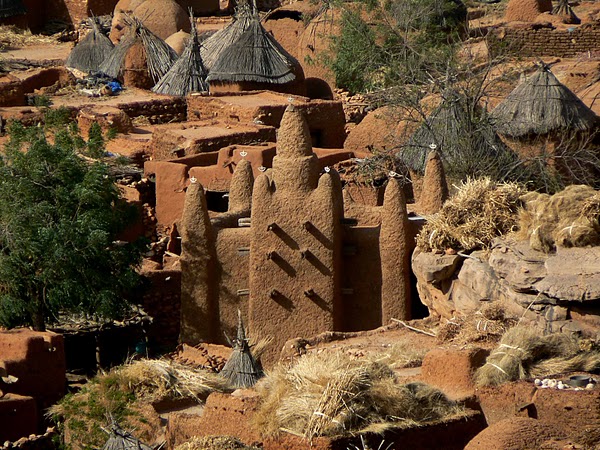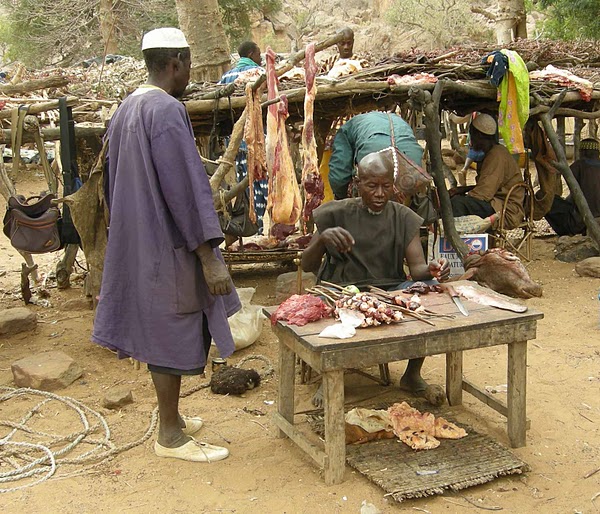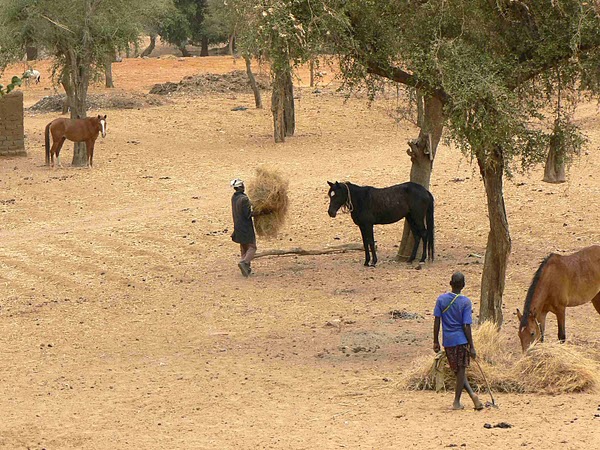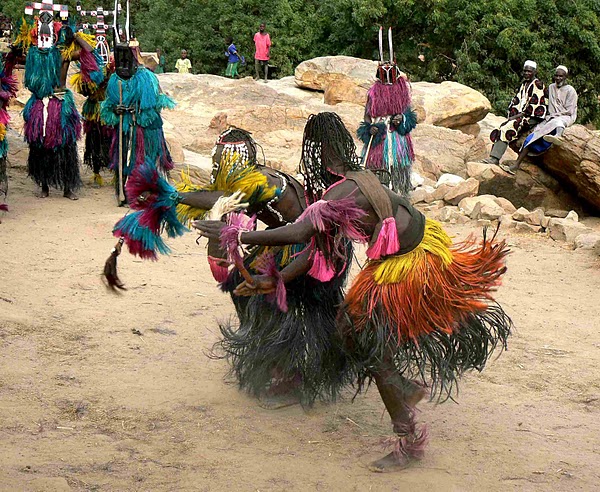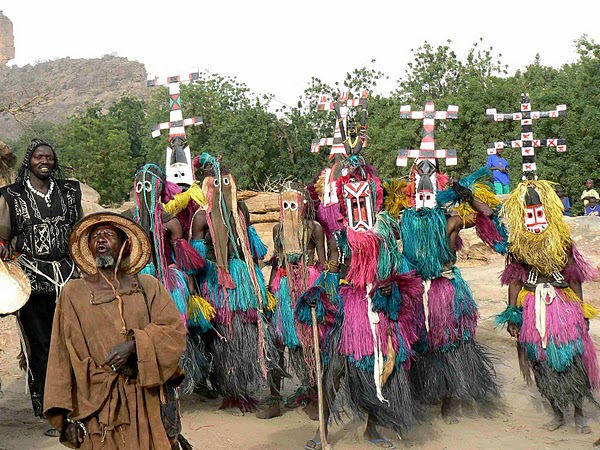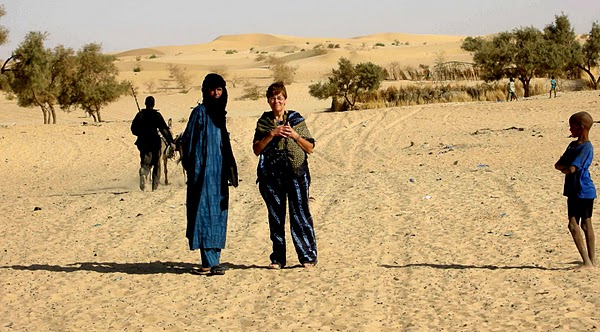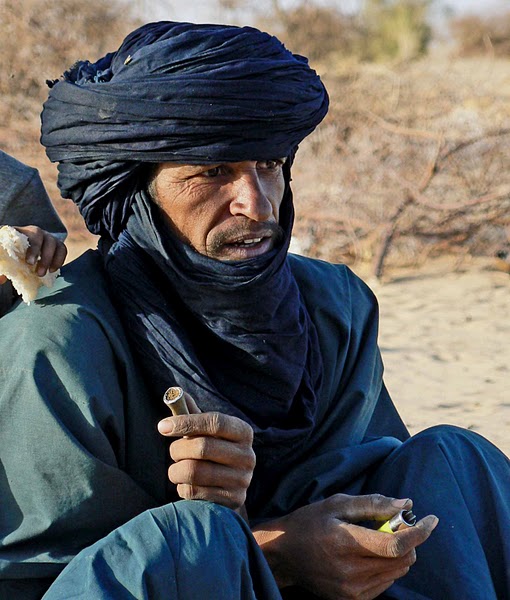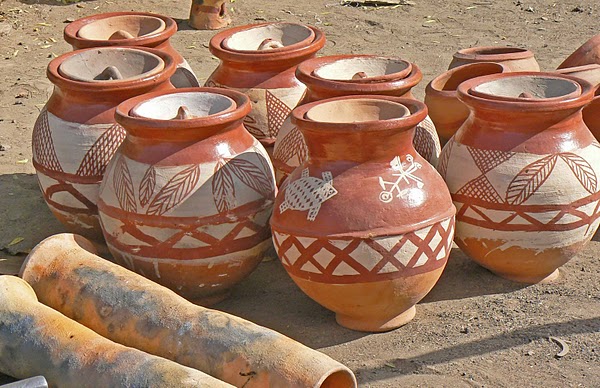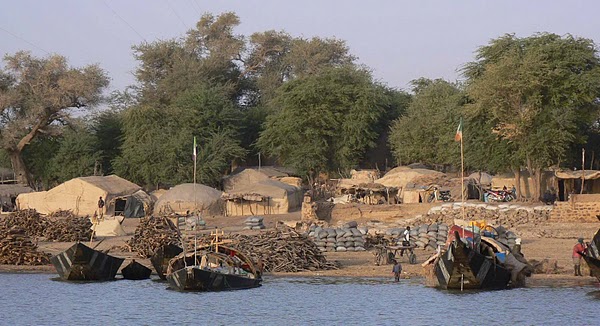Adventures in Mali
Africa evokes a primal sense of adventure that fans the embers of wanderlust smoldering in the souls of travelers to flame. The rhythm of African life moves to a sensuous, captivating beat that will awaken your senses and lead you through doors where imagination becomes reality.
Dogon Country: Pays Dogon - Bandiagara Escarpment, Mali
 Visiting the Dogon area is truely facinating and a cultural experience not to be missed.
Visiting the Dogon area is truely facinating and a cultural experience not to be missed.
Dogon Country, or Pays Dogon as it translates in French, encompasses the Bandiagara Escarpment known as Falaise de Bandiagara that rises above the flat landscape of the Sahel on the fringe of the Sahara Desert and stretches for a distance of 150 kilometers. The escarpment is the home of the unique and fascinating Dogon people.
The cliff faces of the escarpment reveal small ancient cliff dwellings which are said to be the remains of the homes of the Tellem. The Tellem are said to have been very diminutive people and are reputed to have been a race of magical and mysterious beings. The remnants of their civilizations high up in the cliffs are reminiscent of some of the cliff dwellings thought to have been the home of the fabled Anasazi race in the Southwestern United States.
Old Dogon dwellings also perch high on the cliff face for in less peaceful times the Dogon people retreated from the lower elevations to escape their enemies. As the threat of attack from other tribes lessened over the years, the Dogon slowly moved their dwellings down from the cliffs. Many modern day Dogon villages are at the foot of the escarpment close to their fields which are planted in the lower elevations.
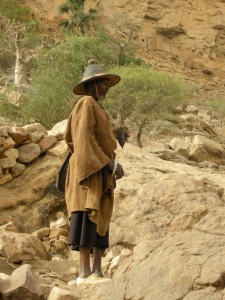 The Dogon are renowned for their traditions, legends and mythology in addition to their artistry and craftsmanship. Their hereditary astronomical knowledge, which relates to their religious beliefs, includes reference to a star they call Po Tolo; tolo meaning star and po being the name of a tiny plant seed. The western world knows this star as Sirius B, an obscure companion to Sirius, the Dog Star. Historical evidence makes reference to the star’s suspected existence in 1844; however it was not until 1970 that western astronomers first photographed the star. It is interesting to note that the Dogon conveyed their knowledge of Sirius B to French anthropologists Marcel Griaule and Germaine Dieterlen in the 1930’s. The Dogon’s astronomical knowledge continues well beyond the existence of Sirius B. Their traditional mythologies include an awareness of the four moons of Jupiter and the rings of Saturn and they believe that they were visited by extraterrestrials from another galaxy who taught them about the universe.
The Dogon are renowned for their traditions, legends and mythology in addition to their artistry and craftsmanship. Their hereditary astronomical knowledge, which relates to their religious beliefs, includes reference to a star they call Po Tolo; tolo meaning star and po being the name of a tiny plant seed. The western world knows this star as Sirius B, an obscure companion to Sirius, the Dog Star. Historical evidence makes reference to the star’s suspected existence in 1844; however it was not until 1970 that western astronomers first photographed the star. It is interesting to note that the Dogon conveyed their knowledge of Sirius B to French anthropologists Marcel Griaule and Germaine Dieterlen in the 1930’s. The Dogon’s astronomical knowledge continues well beyond the existence of Sirius B. Their traditional mythologies include an awareness of the four moons of Jupiter and the rings of Saturn and they believe that they were visited by extraterrestrials from another galaxy who taught them about the universe.
To the Dogon, whose myths and legends are learned through oral transmission, the adventures and actions of the gods are examined and characterize the behavior and actions of humans on earth. Their myths represent the entire universe with the world as a microcosm reflected in everything, including the surrounding stones, water, trees and man himself. Dogon rituals encompass the decorating of objects with symbolic designs and patterns which reveal their meanings to the initiated through encoded messages.
In addition to the symbolism found throughout Pays Dogon in the form of static objects including carved statues, household objects and jewelry; the Awa or cult of the masks plays an integral and important role in Dogon traditions and religion. Spectacular representations of the dances of the masks are performed for visitors in many of the larger Dogon villages.
Although Dogon beliefs center on cults, totems and ancestor spirits a good number of Dogon share Muslim beliefs and mosques can be found in the larger villages.
As is the norm in Mali, the Dogon people are friendly, welcoming and polite hosts to visitors to their villages.
Dogon Circumcision Rattles

Used to Announce the Newly Circumcised Boys
Pays Dogon
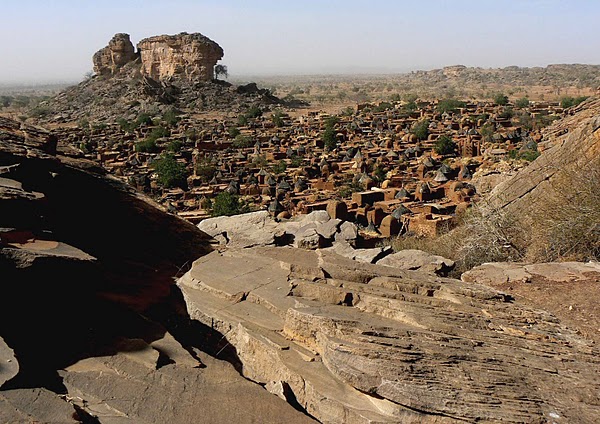
View from the Cliffs
Circumcision Area, Songho

Painted Symbols on Cliff Face
Circumcision Area, Songho
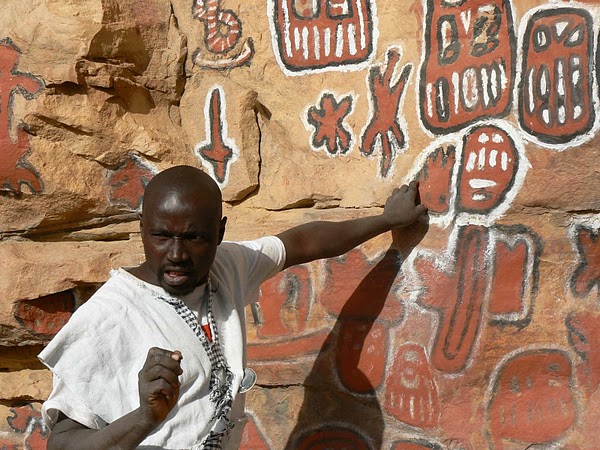
Dogon Guide Explaining Paintings
Pays Dogon

View from the Cliffs
Baobab
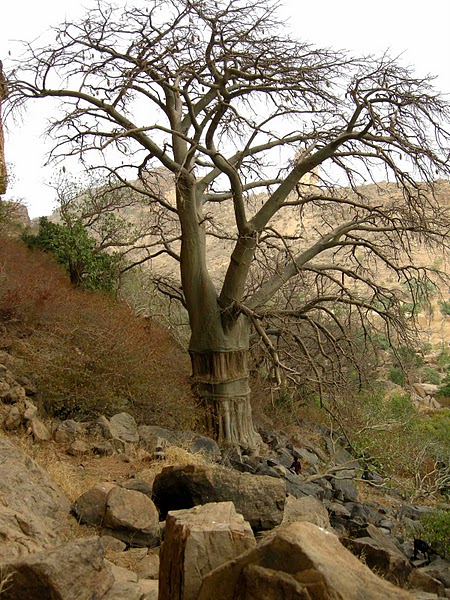
On the Cliffs of Pays Dogon
Ancient Cliff Dwellings
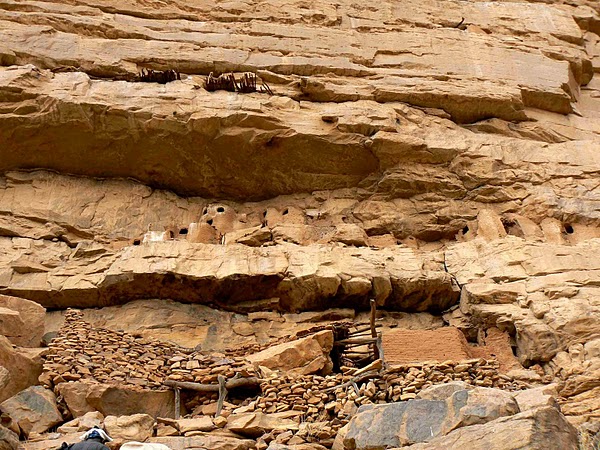
Dogon & Tellem Dwellings in the Cliffs
Dogon Door

Displaying Symbolic Designs
Dogon Door

Intricate Door Lock
Dogon Window Shutter

Carved with Lizzard Designs
Dogon Water Spouts
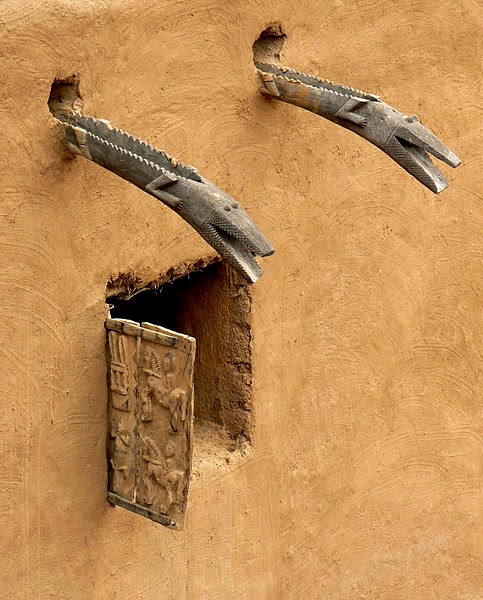
Crocodile Design
Dogon Water Spout
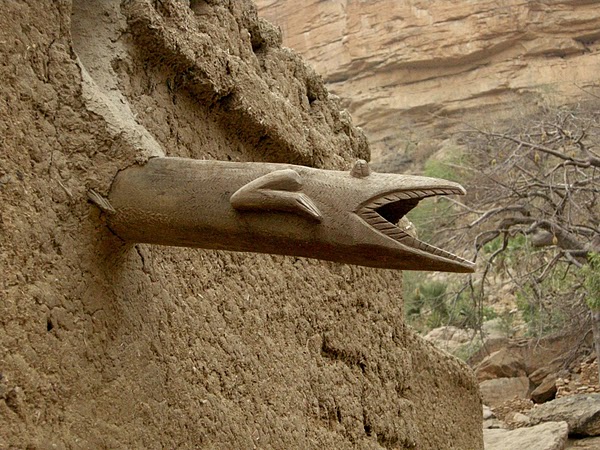
Crocodile Design Water Spout
Dogon Village

Typical Modern Dogon Dwellings
Suzy and Stephie
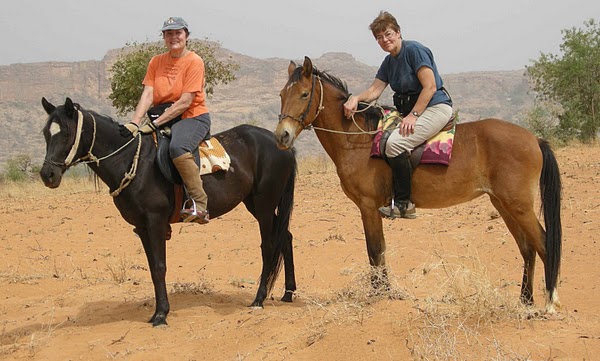
Riding in Pays Dogon
Riding to Dogon Village

Meeting the Kids
One of Our Horses

Horse at Rest Stop Showing Traditional Saddle
Common Style of Traditional Bridle
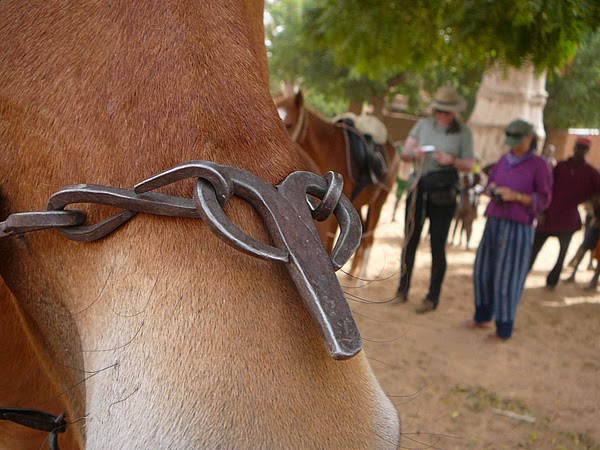
Close Up of Nose Piece on Bridle
Riding Through Dogon Village
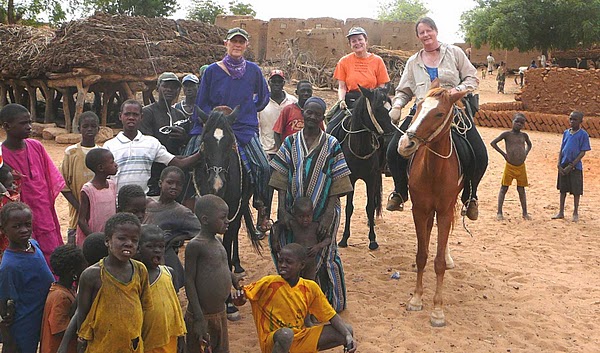
Making Friends
Uru, the Horseman of Ennde

Uru the Horseman and Two of Our Mounts
Our Dogon Guide, Amadou
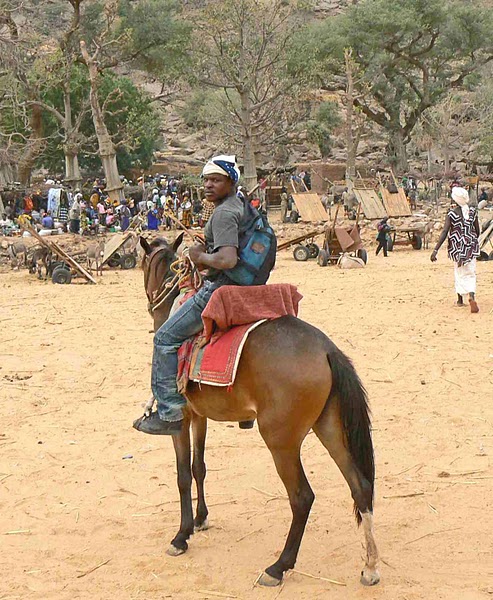
Riding to Local Village on Market Day
Dogon Market
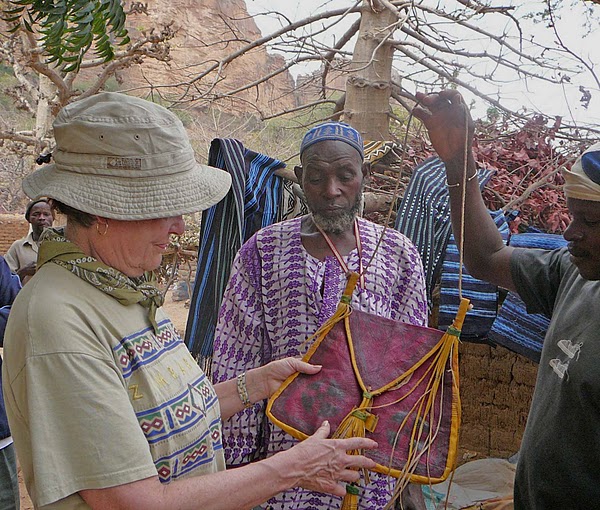
Shopping for Leather Goods
Riding in Pays Dogon
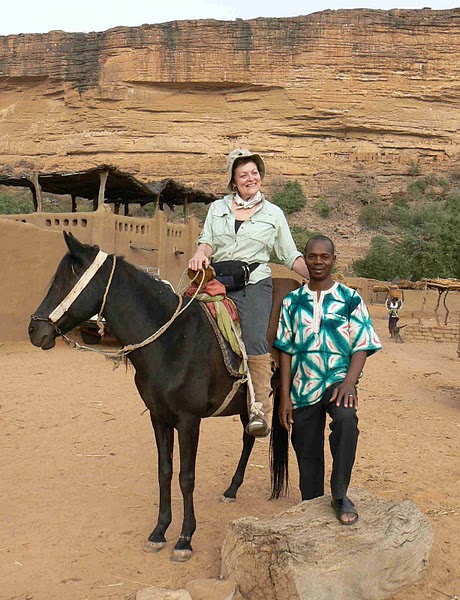
Gorel and Stephanie
After the Days Ride
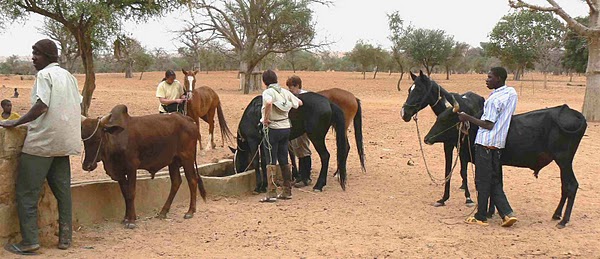
Waiting to Drink at the Well
Horses Drinking at Well
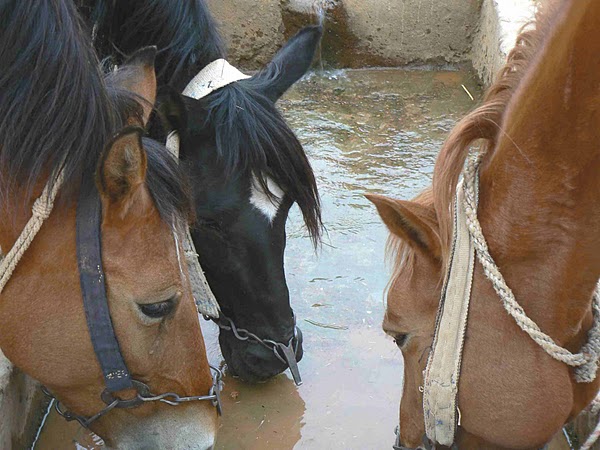
Horses Drink at the Local Well
Dogon Kids

Excited Kids Meet Riders
Dogon Rider
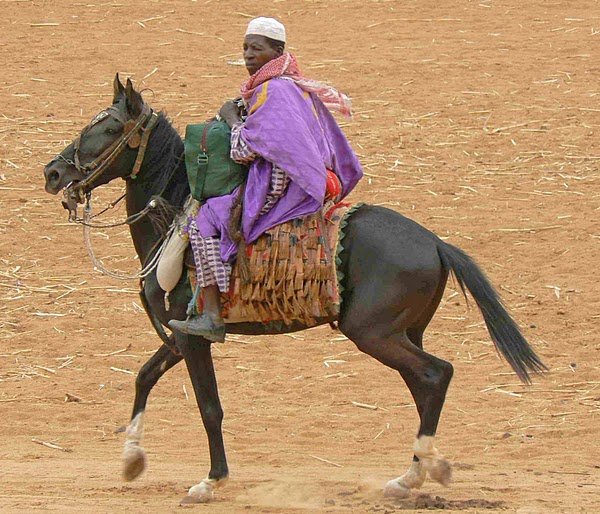
A Dogon Rider Passing By
The Biggest Music Festival in Africa: le Festival au Desert, Mali
Le Festival au Desert, the Festival of the Desert, is held annually in the dunes of the Sahara Desert not far from Tombouctou, Mali. The venue for many years has been the oasis of Essakane, approximately 65 rugged kilometers from Tombouctou. The festival features traditional Tuareg and celebrated Malian musicians as well as groups from other West African countries.
Noted musicians in attendance include Tinariwen, the Tuareg group from Tombouctou that gained international notoriety with their performance during the debut of the festival in 2001. Salif Keita, Oumou Sangare, Habib Koite, the late Ali Farka Toure and his son Vieux Farka Toure are just a few of the shinning stars who delight the multi cultural international audience.
The idea for the festival took root in 1996 during a time when 3,000 guns were burned in the “Flame of Peace” to signify the end of fighting between peoples of the region. The idea was to combine the festival with the great traditional gathering of the nomadic Tuareg, or Tamashek people to promote the economy and develop the region. The name Tuareg applies to a Berber ethnic group and originated with the early explorers and historians of the region. The Tuareg call themselves Kel Tamasheq which translates to “Speakers of Tamasheq”. For centuries, traditional gatherings of these nomadic people have been celebrated with song, dance, poetry, ritual sword fighting, games, races and other customary entertainments.
For international visitors, the festival offers a wondrous occasion to be immersed in the world of the desert dwelling Tuareg. The three night festival provides a kaleidoscope of smells, sights and sounds that titillate the senses. Daytime activities include sampling delicious traditional food, shopping for treasures at the craft market, listening to impromptu concerts and participating in social interaction with people from local ethnic groups and visitor from around the globe.
The feature concerts begin in the evening and the impressive high tech sound system fills the starry nights with enchanting, rhythmic melody until the wee hours of the morning.
The Festval Stage

The Main Stage at the Festival au Desert
Festival au Desert, Essakane Mali

Tuaregs Arrive for Festival
Festival au Desert

Scene From the Festival
Tuareg Camel Riders at Festival
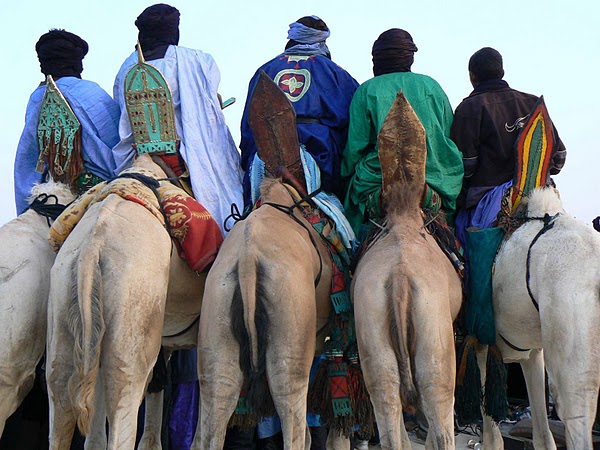
Grandstand View Tuareg Style
Camel Riders Feet

Close Up of a Riders Feet
Tuaregs on Camels
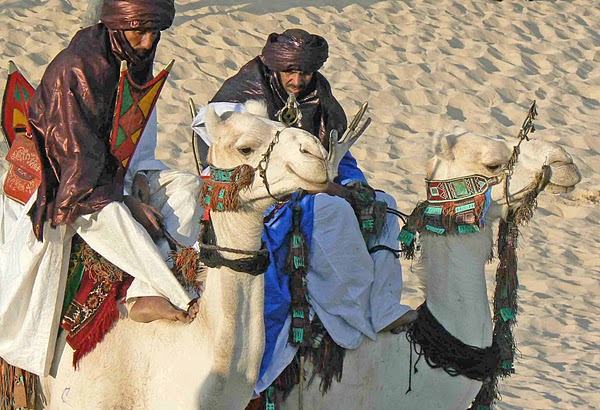
Festival au Desert
Decorations on a Camel Saddle
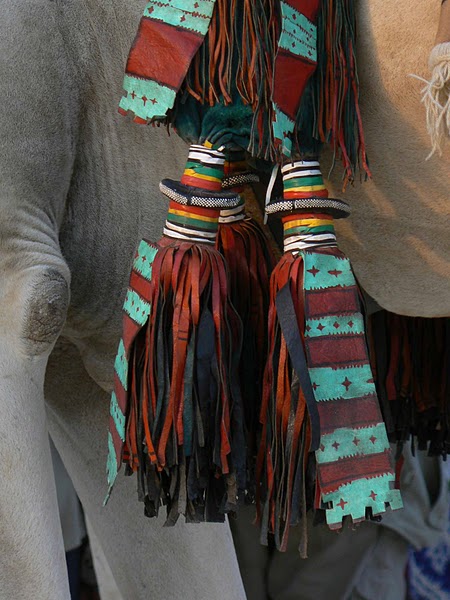
Beautiful Tassles Adorn a Camel Saddle
Camels at the Festival
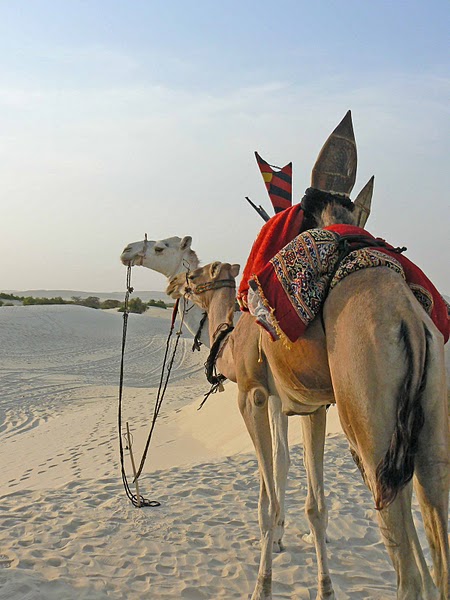
Festival au Desert
Concert Goers
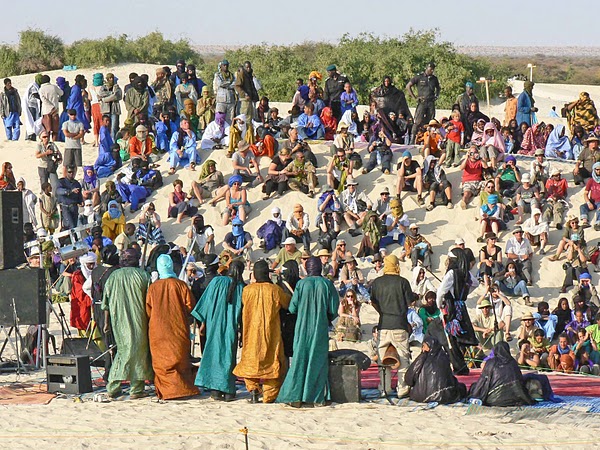
Enjoying the Concert from the Dunes
Enjoying the Concert from the Dunes

Festival au Desert
Faces in the Crowd

These Guys Seem Awed by the Crowd!
Faces at the Festival
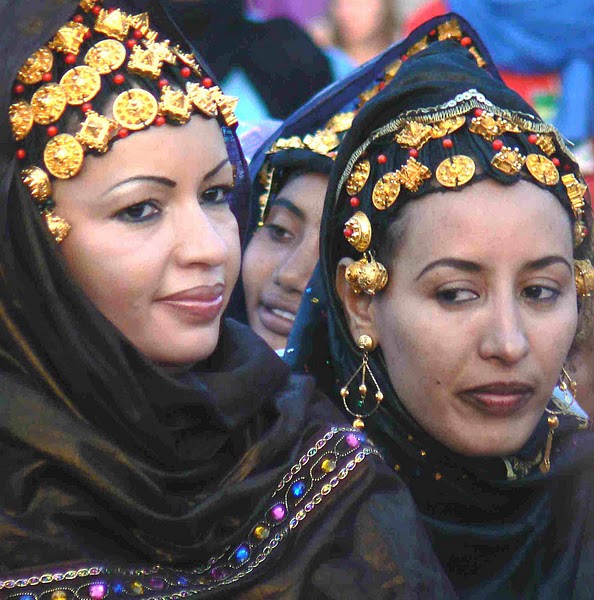
Female Tuareg Performers
Local Photographer

Bedecked in Fashionable Ornaments
A Face in the Crowd

Female Tuareg Performer
A Face in the Crowd

A Woman in the Audience
Goods for Sale
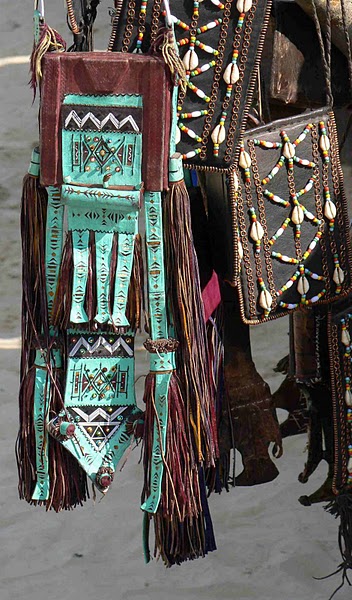
Leather Bags for Sale in the Market Place
Modes of Transportation
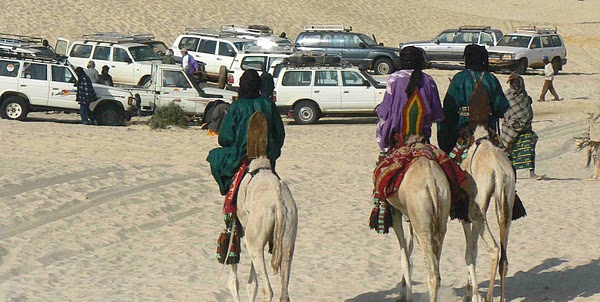
Camels and 4 x 4s
Spectators
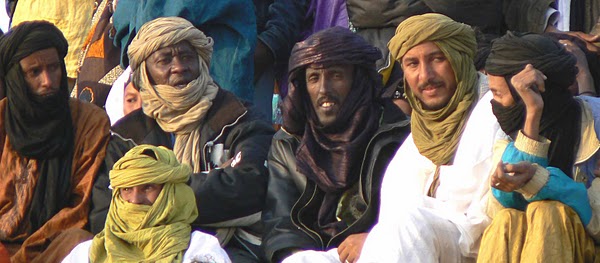
Some of the People Attending the Festival
Tuareg Horse

Horse in the Crowd
Festival au Desert, Essakane Mali
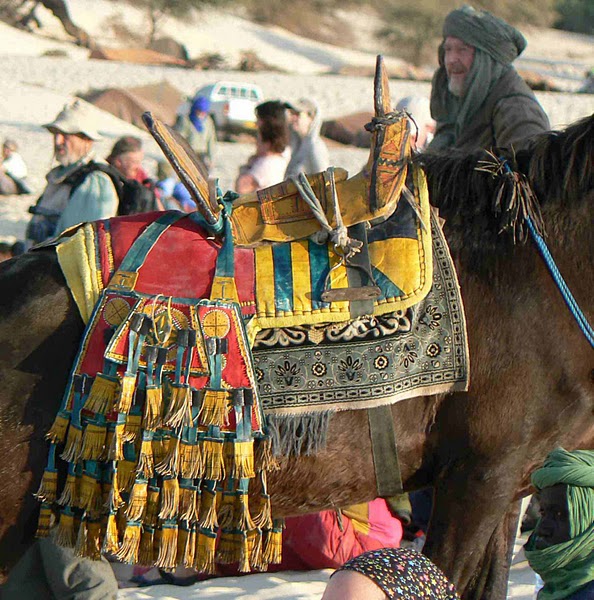
Tuareg Saddle on Horse at Essakane
Splendid Tuareg Camel Rider
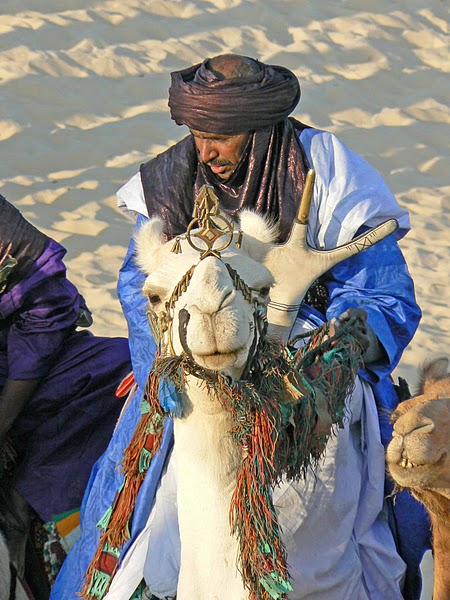
Festival Attendees Don Their Most Spendid Outfits
Festival au Desert, Essakane Mali

Tuareg Camel
Festival au Desert, Essakane Mali
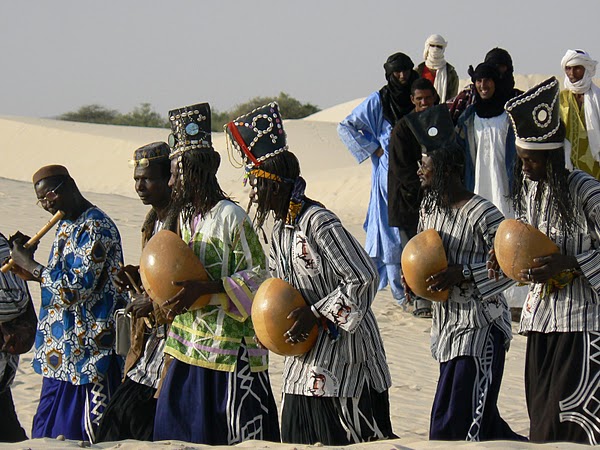
Fulani Musicians
Traditional Tuareg Tent
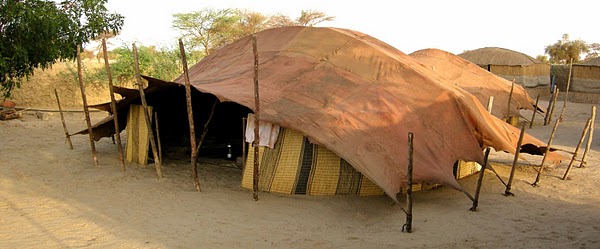
Festival Goers Often Stay in Tents of this Style
The Fabled City of Tombouctou
Tombouctou “The Mysterious” is a place of ledgends.
An historical center of trade, Tombouctou of old was also a center of learning. The many scrolls preserved in Tombouctou by the arid climate are currently in the limelight in world news (2008-2010). The scrolls, which are in the process of being professionally preserved and cataloged are said to rival the Dead Sea Scrolls in wealth of ancient knowledge and importance.
View of the Tuareg Peace Monument
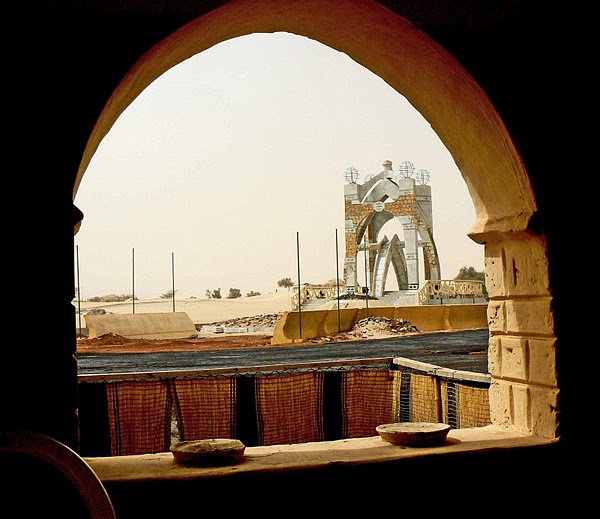
A View Through a Window of the Tuareg Peace Monument in Tomboctou, Mali
The Tuareg Monument to Peace

Tombouctou, Mali
House of Scrolls

The Scrolls of Tombouctou are Said to Rival the Famous Dead Sea Scrolls
Woman Working with a Scroll
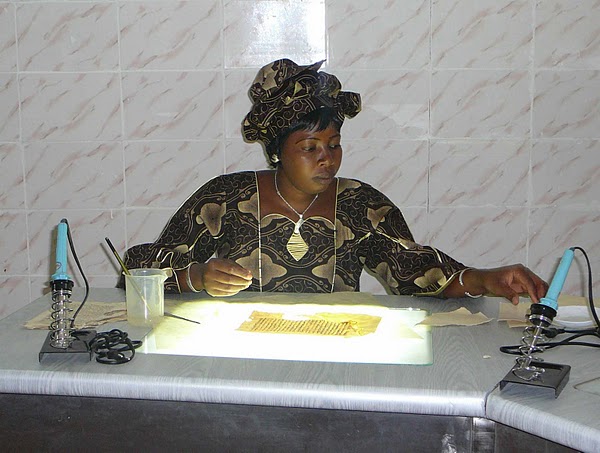
The Precious Scrolls of Tombouctou are Being Preserved
Architecture of Tombouctou
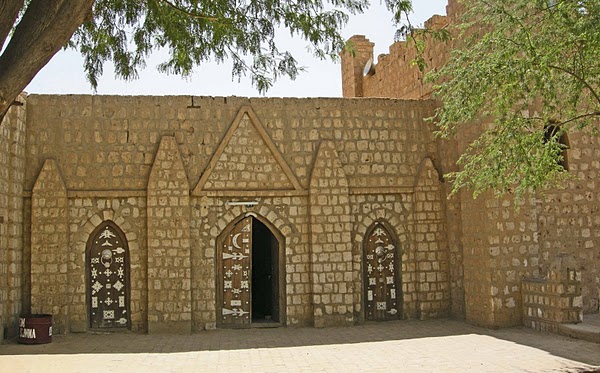
Beautiful Local Building
Turban Shop
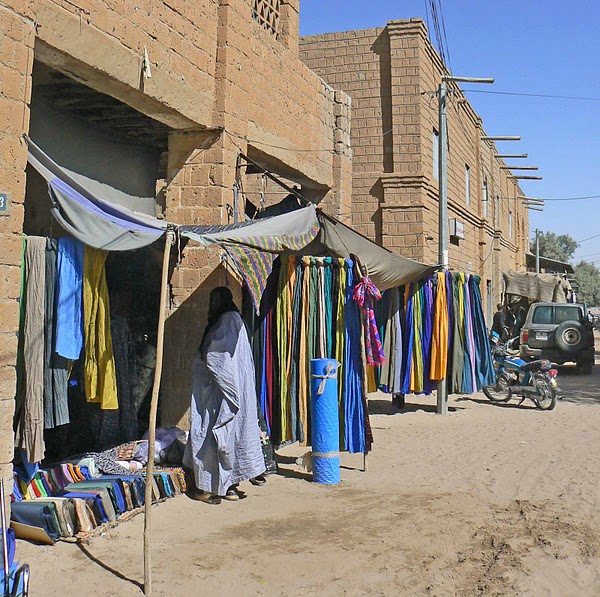
Turbans for Sale on the Streets of Tombouctou
Turbans

Turbans for Sale in Tombouctou
A Small Shop
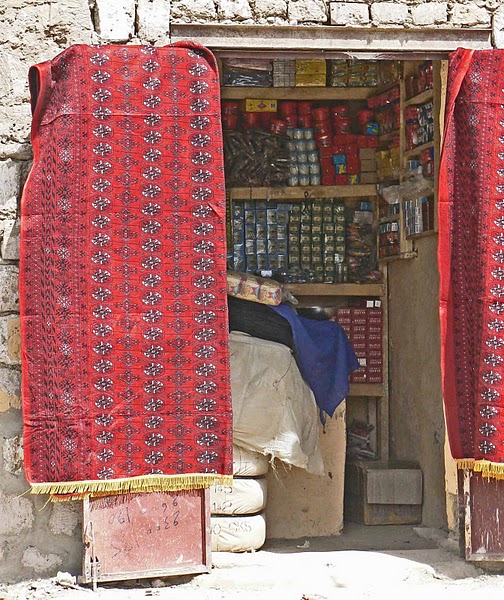
A Small Shop Front in Tombouctou
Rugged 4 x 4
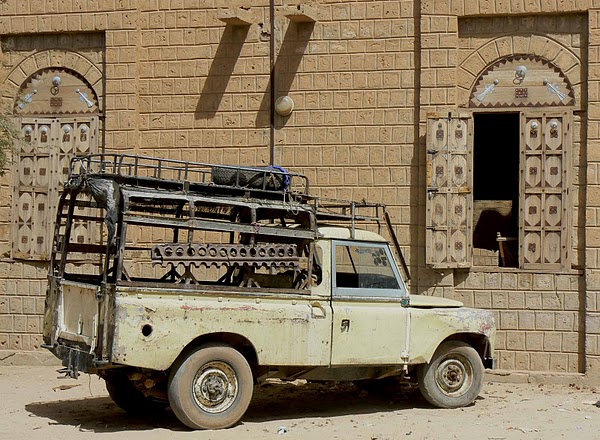
The Tough Desert Conditions Reguire Tough Vehicles
Window

Window Shutters in a Building, Tombouctou
Baggage Donkey
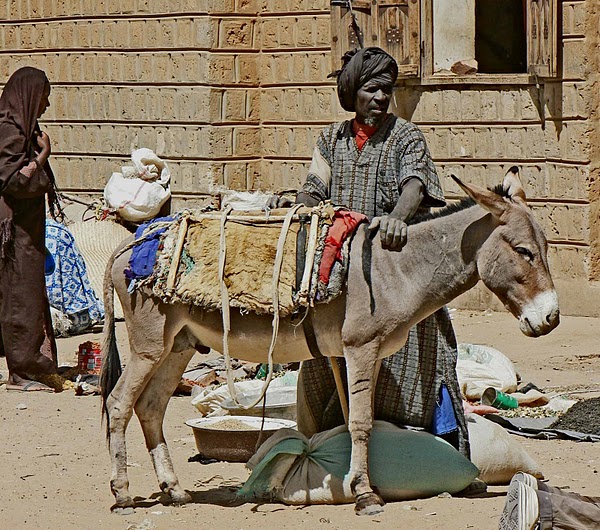
Man with Baggage Donkey in Tombouctou
Camels Waiting

Camels Waiting as Tuareg Riders Shop in Town
Camel Parking on the Edge of the Sahara

On the Outskirts of Tombouctou
Heading for the Dunes
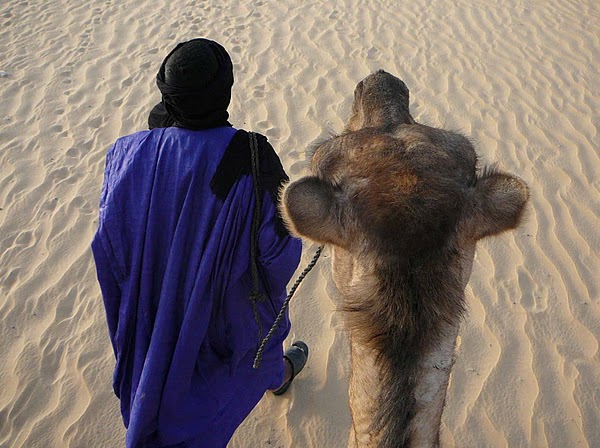
Camelback View
Camel Saddles
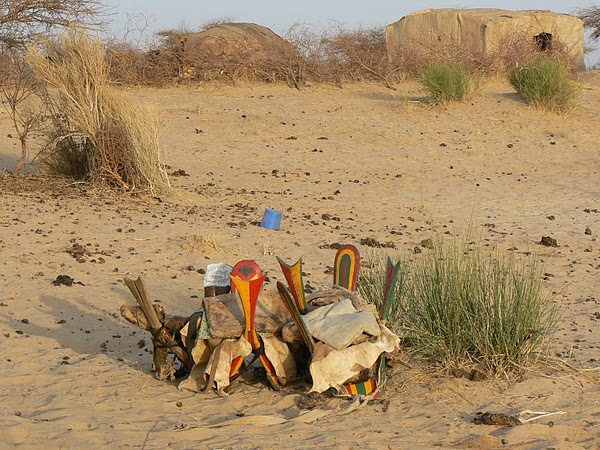
Camel Saddles in a Tuareg Encampment
Stephanie with Camels
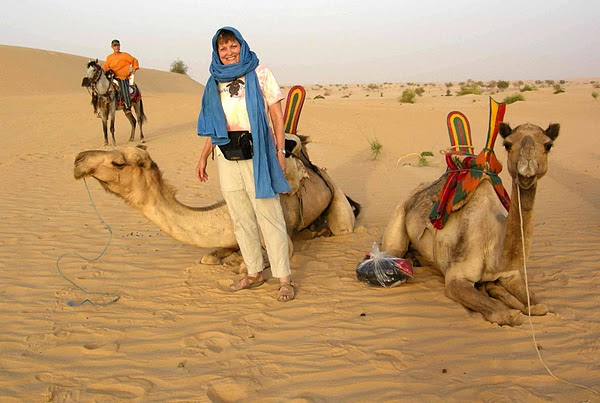
A Ride in the Dunes with Horse and Camels
Camel Caravan
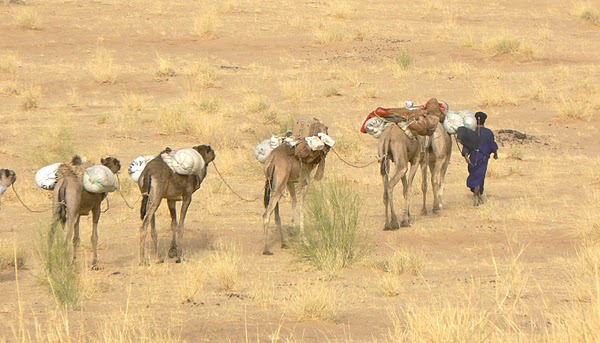
In the Sahara Outside of Tombouctou
Camel Caravan
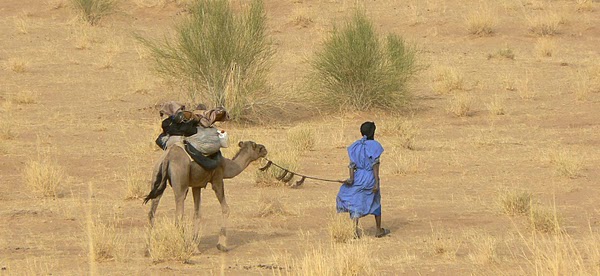
Man Leading a Camel
Camels
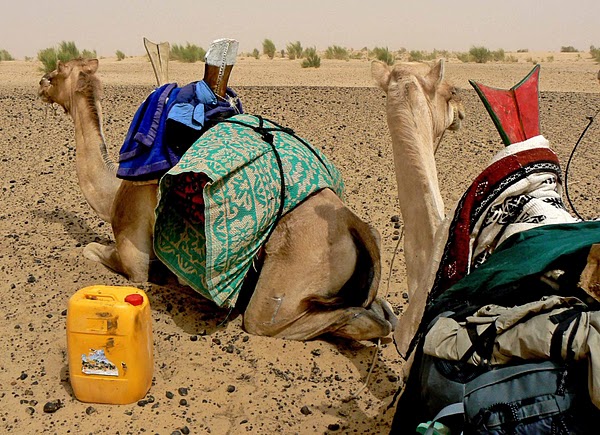
Camels Carrying Necessities for Sleeping Out in the Desert
Tuareg Camels
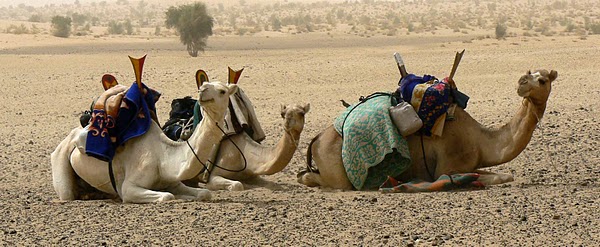
Waiting for Their Riders to Return
Waiting for a Drink
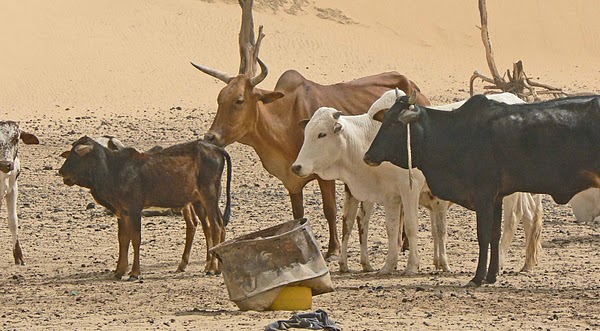
At a Well Near Tombouctou
Cows at a Well Near Tombouctou

Livestock Waiting for a Turn to Drink
Solitary Camel

In the Dunes Near Tombouctou
Horse in the Dunes

Rider Enjoys the Solitude of the Dunes and a Good Horse
Oumar: The Horseman of Tombouctou
Oumar in-Dahoye el Arawanie is a horseman of note. Born to Tuareg nobility, horses are his passion. It is unusual to find a horseman with Oumars talents among the Tuareg in the Tombouctou region, as the camel is the usual Tuareg preference. Ourmar has a passion for horses shared by serious horsemen world wide.
Oumar in-Dahoye el Arawanie

Oumar and His Stallion
Oumar

In the Dunes Outside of Tombouctou
Horse of the Desert
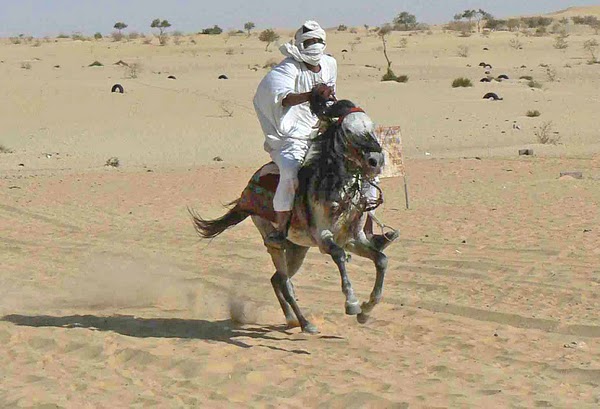
Oumar Gallops Through the Sands of the Sahara
Traditional Tuareg Bridle
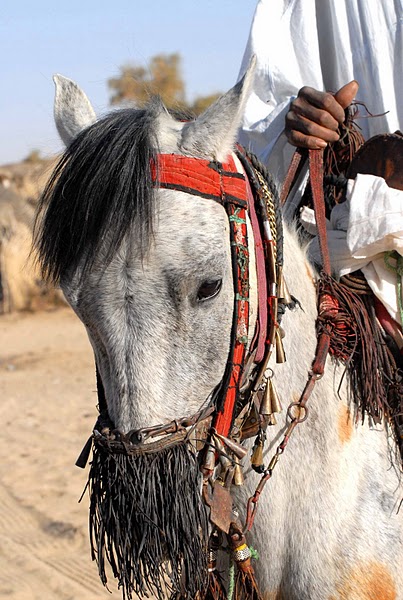
Close Up of Bridle on Oumar’s Horse
Traveling Along the Niger River in Mali
The Niger River flows through the heart of Mali. It’s waters provide an invaluable life source to much of the local population. Farming, fishing and commerce rely heavily on this mighty waterway.
Much of the road from Bamako to Pays Dogon and Tombouctou follows close to the path of the Niger. The fabled Mud City of Djenne, a World Heritage site, Segou and Segoukoro (old Segou) and the bustling river port city of Mopti are destinations well worth visiting that lay on the banks of the Niger. Even Tombouctou is only a few kilometers from the river.
The following photos were taken along the river in Segou, Seoukoro, Djenne and Mopti and from the decks of a local river boat, called a Pinasse, during an amazing river voyage from Tombouctou to Mopti.
Haute Couture Africa Mode

At a Dress Shop in Segou
A Laden Pinasse
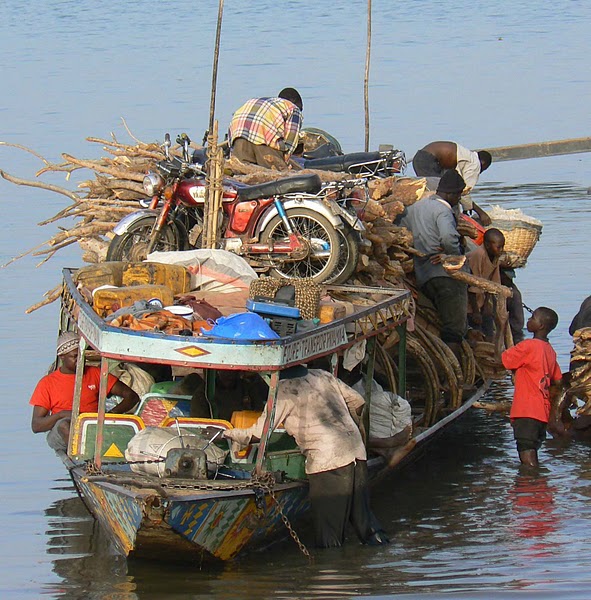
A Pinasse Arrives with Cargo in Segou
Off Loading a Pinasse
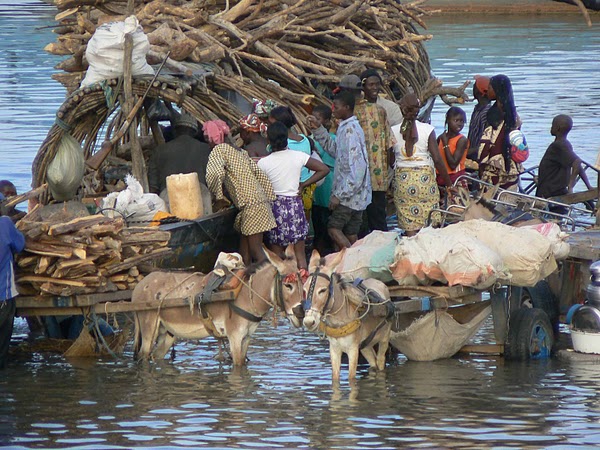
Loading Goods onto Donkey Carts in Segou
The Riverfront
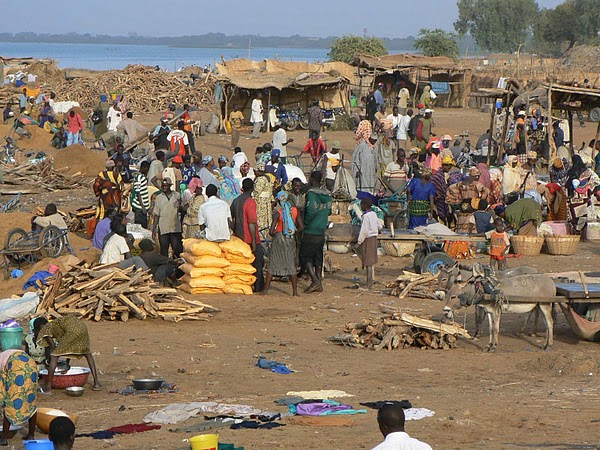
Activity on the Niger River in Segou
Washing the Mercedes
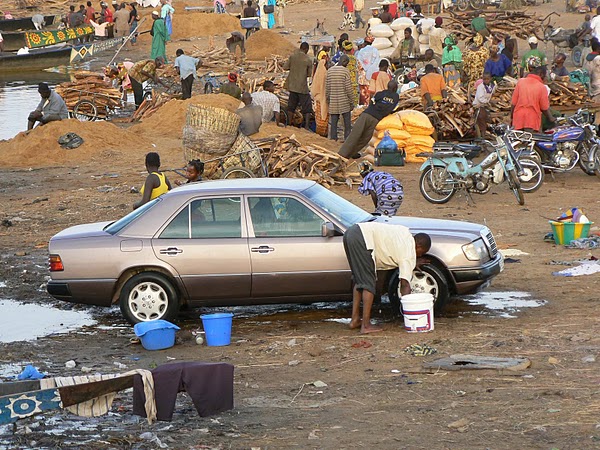
A Man Taking Care of His Car in Segou
Fulani Boy and Horse
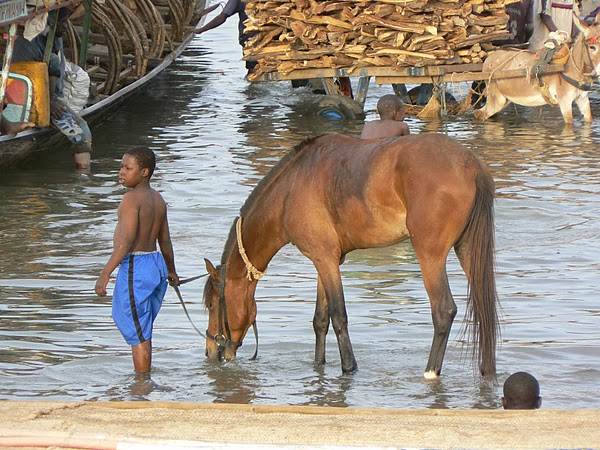
A Boy Takes His Horse into the River for a Bath
Horse Having a Bath

Animals are Well Looked After in Mali
Horse and Boy

On the Waterfront in Segou
After the Bath

Horse and Boy After Washing the Horse in the River
Donkeys and Pirouge

On the Banks of the Niger, Segoukoro
Cattle Crossing the River

Cattle Cross the Niger in Segoukoro
Design on a Pinasse

Blue and White Design on Pinasse in Segou
Detail of Pinasse in Segou
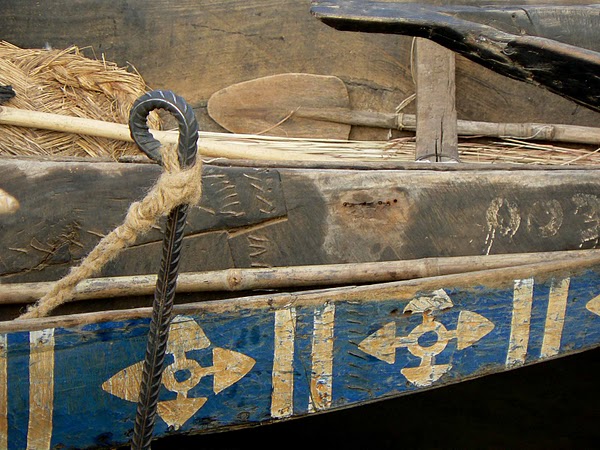
Note Handcrafted Wooden Paddle
Calabashes for Sale

In the Market in Segoukoro
The Ferry Crossing at Djenne
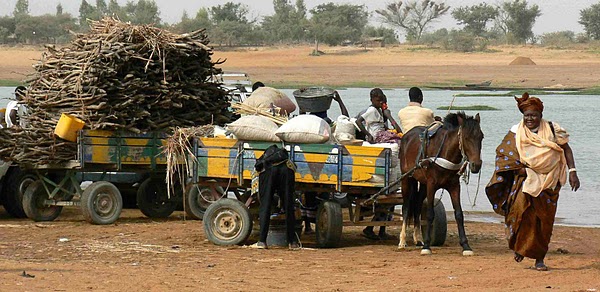
Horse Cart Waiting for the Ferry
Djenne, the City of Mud

A Place Not to Miss!
Mud Cloth in Djenne

Bogolan, or Mud Cloth Originated in Djenne
Djenne
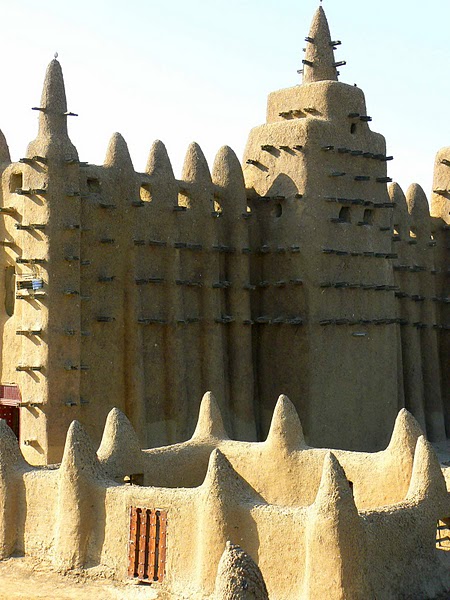
One of the Fabled Mud Buildings
Mud Architecture, Djenne

Window in a Wall in Djenne
Window in Djenne
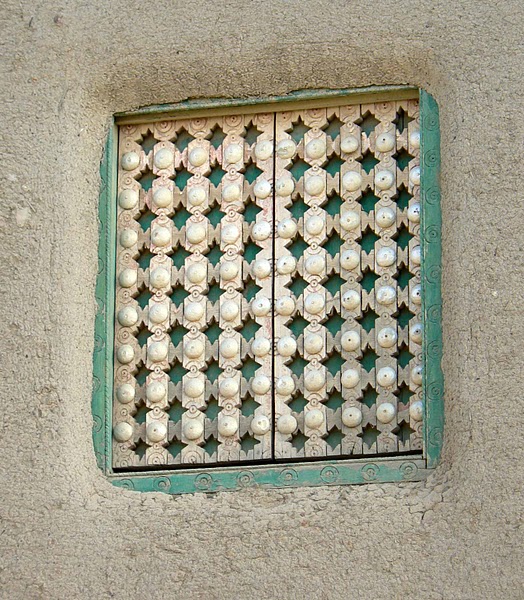
Window in a Wall in Djenne
Going to Market
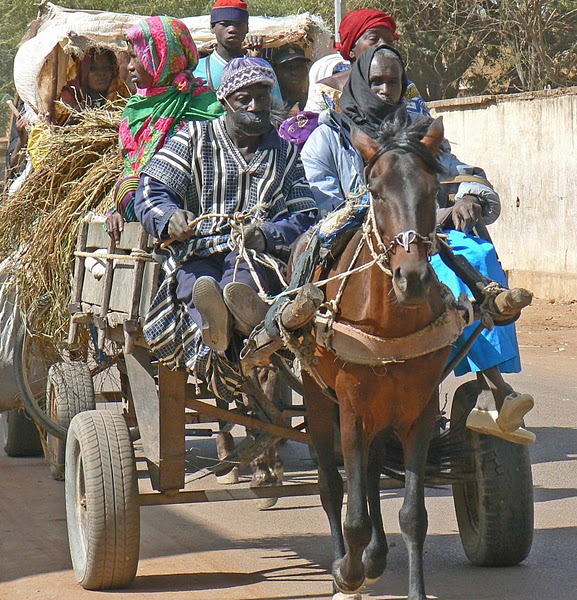
Horse Cart Headed for the San Market
San Market
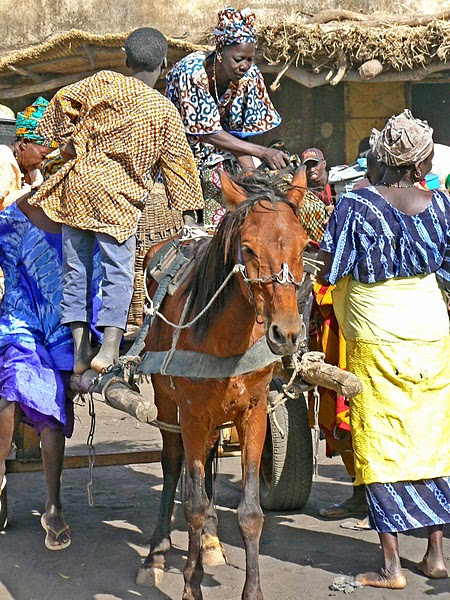
Horse Cart at the Market in San
San Market

Lady Selling Dried Fish
Color is Everywhere in Mali

Horse Cart at the Market in San
Cart Horse’s Amulet
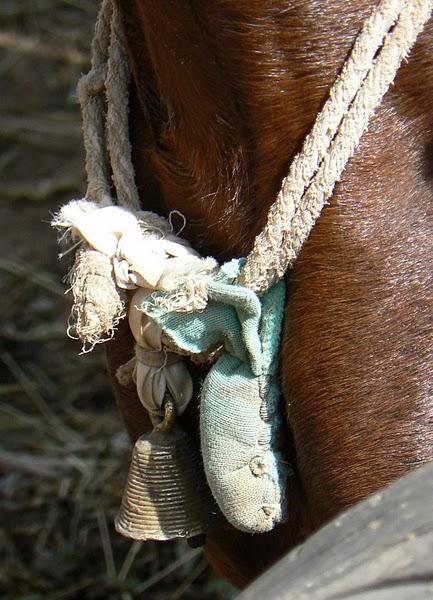
San Market
Cart Horse’s Amulet
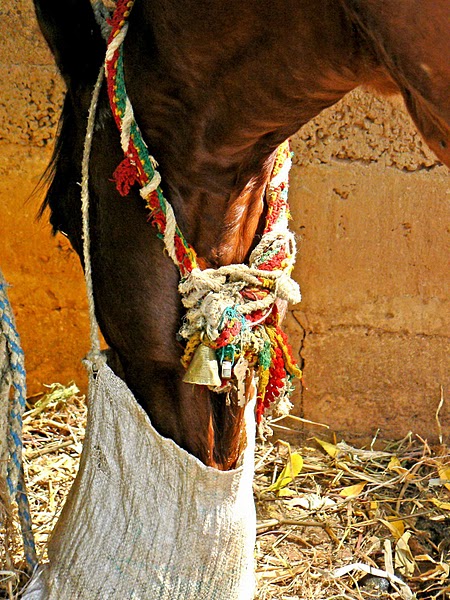
San Market
Close Up of a Donkey

San Market
San Market

Man Selling Kola Nuts in the San Market
Pure Shea Butter
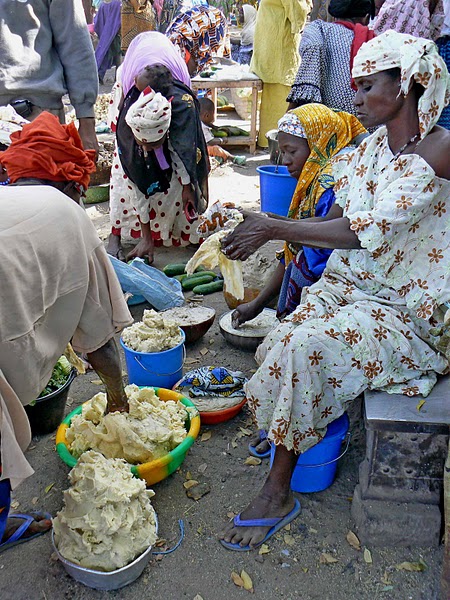
For Sale in the Market in San
Lady Weighing Shea Butter
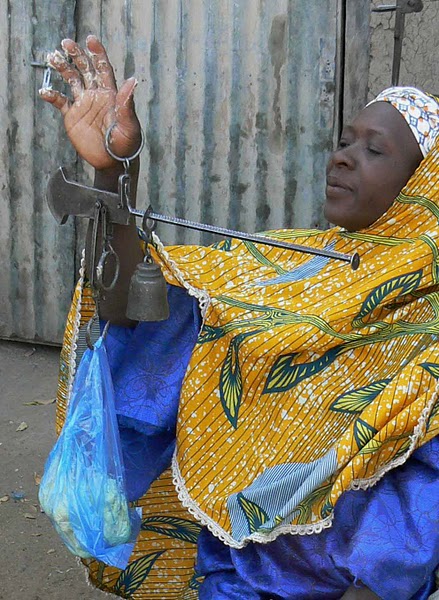
Shea Butter is One of Mali’s Primary Exports
Lady Selling Watermellons

San Market
Calabashes on the Waterfront in Mopti

Calabashes of Every Size For Sale
Salt on the Waterfront at Mopti
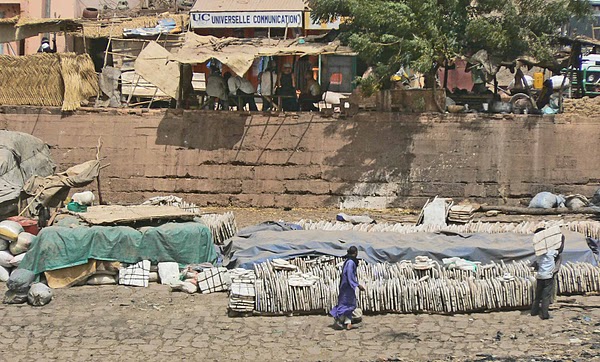
Transported from the Distant Salt Mines of the Sahara
The Waterfront in Mopti
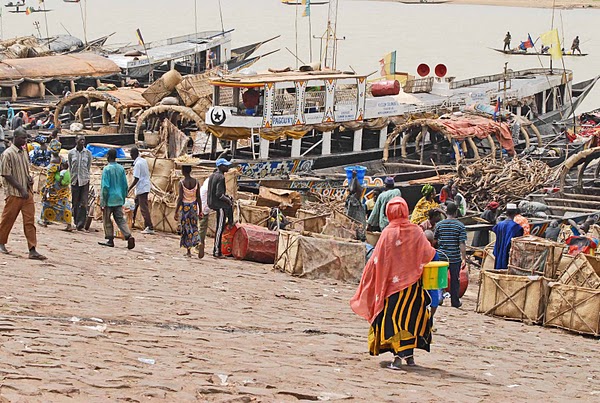
The Bustling Port of Mopti
Close Up of Pinasse
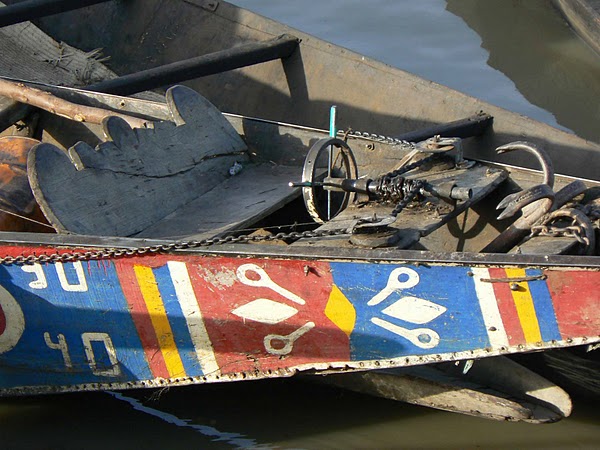
Showing Steering Mechanism
Man in Orange Boubou

Reflecting on the River
Ladies in Twin Boubous

Ladies Crossing the Water in Mopti
Man in Purple Boubou

Man on the Waterfront in Mopti
Small Boats on the River

Scene From the Mopti Waterfront
Man in a Blue Boubou

On the Waterfront in Mopti
Bob Marley Pinasse

Everyone Loves Bob Marley!
Design on Pinasse

Color is Everywhere in Mali
Malian Woman
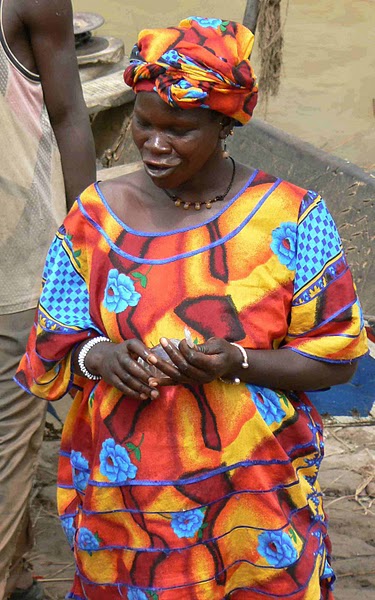
Colorful Dress on the Waterfront in Mopti
Malian Ladies in Beautiful Boubous

Elegant Ladies Attending Mopti Festival
Young Man in Traditional Dress

Mopti Festival
Cultural Festival in Mopti

People of Diverse Malian Cultures Display Their Finery in Mopti
A Face in the Crowd

Man at Festival in Mopti
Mural on the Wall

Colorful Mural on the Wall of a Restaurant in Mopti
Man With a Blue Blanket

Hand Woven Wool Dyed with Indigo
Blankets on Display

Like Male Peacocks Displaying Their Tails
Blanket Vendors in Mopti
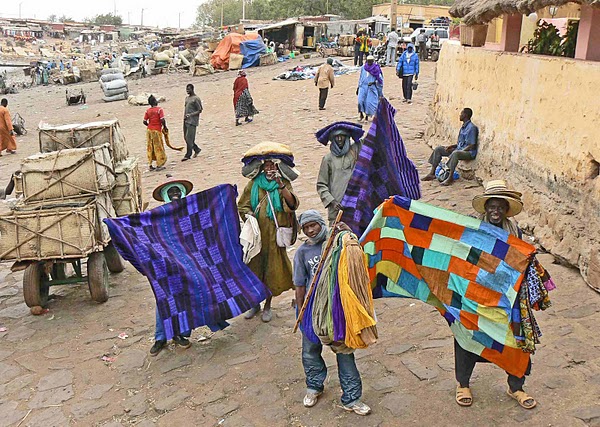
Beautiful Locally Made Blankets on Display
Turban Seller in Mopti

Turbans in the Colors of a Rainbow
Commercial Pinasse
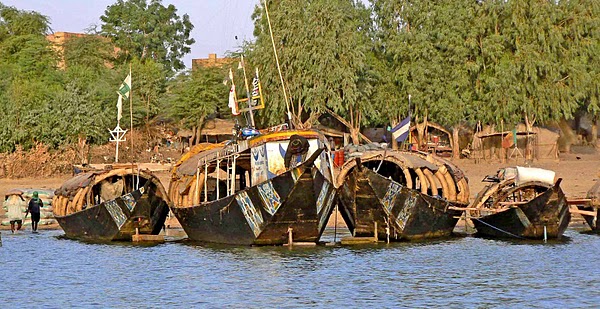
Large Pinasse Stop Along the River to Deliver and Load Goods
Cattle on the River

Children in Pirouge with Cattle Grazing on the Bank
Herd of Sheep
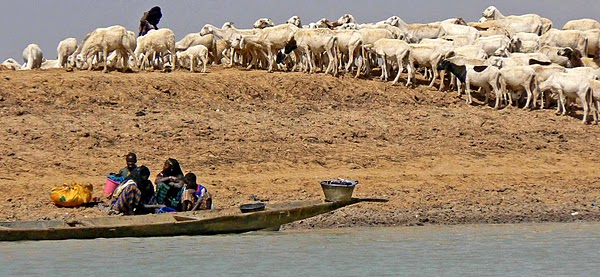
River Dwellers in Pirouge with Sheep
Moto in Pirouge

Everyting Imaginable is Transported by Boat!
Colorful Boatman
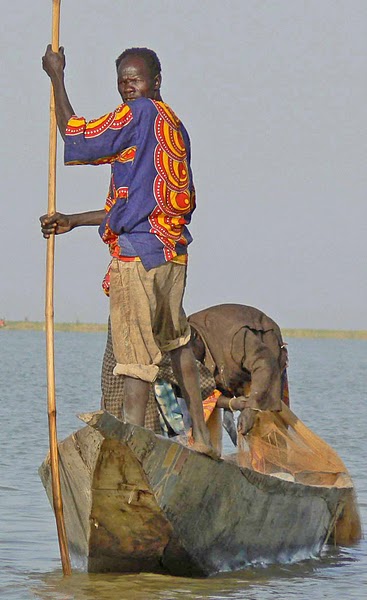
Fisherman on the River
Clothing Vendor on the Niger
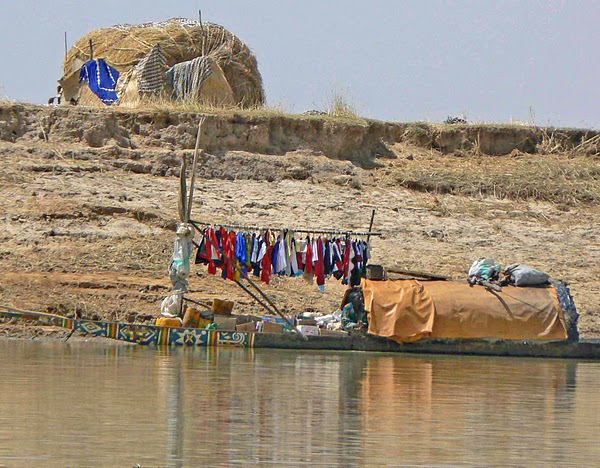
Local Vendor Selling Clothing from Pirouge
